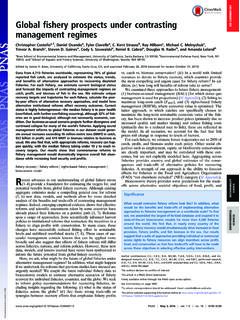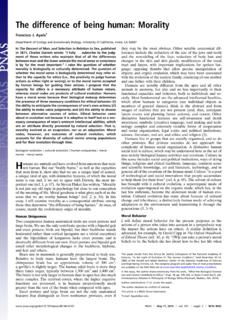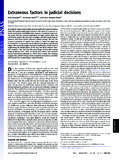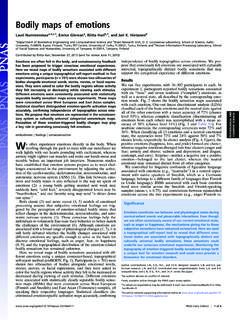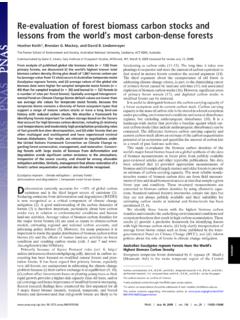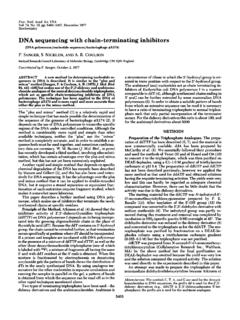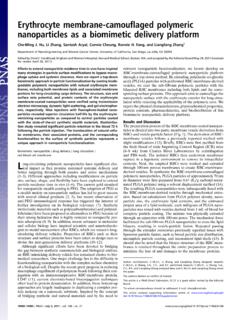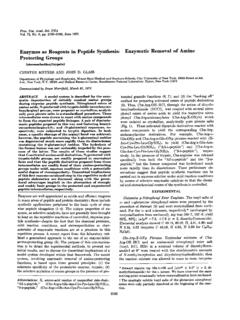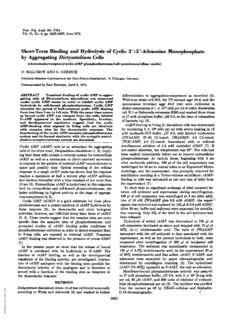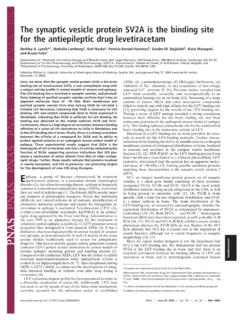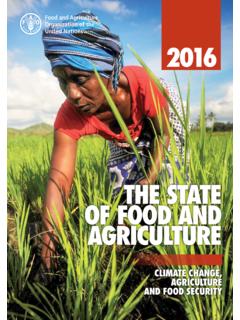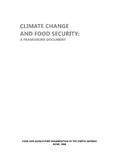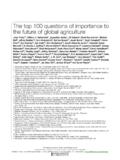Transcription of Global food security under climate change - pnas.org
1 Global food security under climate changeJosef Schmidhuber* and Francesco N. Tubiello * Global Perspective Studies Unit, food and agriculture Organization, 00100 Rome, Italy; Center for climate Systems Research, Columbia University,New York, NY 10025; and Land Use change Program, International Institute for Applied Systems Analysis, A-2361 Laxenburg, AustriaEdited by William Easterling, Pennsylvania State University, University Park, PA, and accepted by the Editorial Board August 16, 2007 (received forreviewMarch 3, 2007)This article reviews the potential impacts of climate change on foodsecurity.
2 It is found that of the four main elements of food security , , availability, stability, utilization, and access, only the first isroutinely addressed in simulation studies. To this end, publishedresults indicate that the impacts of climate change are significant,however, with a wide projected range (between 5 million and 170million additional people at risk of hunger by 2080) stronglydepending on assumed socio-economic development. The likelyimpacts of climate change on the other important dimensions offood security are discussed qualitatively, indicating the potentialfor further negative impacts beyond those currently assessed withmodels.
3 Finally, strengths and weaknesses of current assessmentstudies are discussed, suggesting improvements and proposingavenues for new vulnerability food supply agricultureThe food and agriculture Organization (FAO) defines foodsecurity as a situation that exists when all people, at all times,have physical, social, and economic access to sufficient, safe, andnutritious food that meets their dietary needs and food preferencesfor an active and healthy life (1). This definition comprises four keydimensions of food supplies: availability, stability, access, first dimension relates to the availability of suffi-cient food , , to the overall ability of the agricultural system tomeet food demand.
4 Its subdimensions include the agro-climaticfundamentals of crop and pasture production (2) and the entirerange of socio-economic and cultural factors that determine whereand how farmers perform in response to markets. The seconddimension, stability, relates to individuals who are at high risk oftemporarily or permanently losing their access to the resourcesneeded to consume adequate food , either because these individualscannot ensureex anteagainst income shocks or they lack enough reserves to smooth consumptionex postor both. An importantcause of unstable access is climate variability, , landless agricul-tural laborers, who almost wholly depend on agricultural wages ina region of erratic rainfall and have few savings, would be at highrisk of losing their access to food .
5 However, there can be individualswith unstable access to food even in agricultural communitieswhere there is no climate variability, , landless agriculturallaborers who fall sick and cannot earn their daily wages would lackstable access to food if, for example, they cannot take out insuranceagainst illness. The third dimension, access, covers access by indi-viduals to adequate resources (entitlements) to acquire appropriatefoods for a nutritious diet. Entitlements are defined as the set of allthose commodity bundles over which a person can establish com-mand given the legal, political, economic, and social arrangementsof the community of which he or she is a member.
6 Thus a keyelement is the purchasing power of consumers and the evolution ofreal incomes and food prices. However, these resources need not beexclusively monetary but may also include traditional rights, , toa share of common resources. Finally, utilization encompasses allfood safety and quality aspects of nutrition; its subdimensions aretherefore related to health, including the sanitary conditions acrossthe entire food chain. It is not enough that someone is getting whatappears to be an adequate quantity of food if that person is unableto make use of the food because he or she is always falling is not only a source of the commodity food but,equally importantly, also a source of income.
7 In a world where tradeis possible at reasonably low cost, the crucial issue for food securityis not whether food is available, but whether the monetary andnonmonetary resources at the disposal of the population aresufficient to allow everyone access to adequate quantities of important corollary to this is that national self-sufficiency isneither necessary nor sufficient to guarantee food security at theindividual level. Note that Hong Kong and Singapore are notself-sufficient ( agriculture is nonexistent) but their populations arefood-secure, whereas India is self-sufficient but a large part of itspopulation is not measures are used to quantify the overall status andthe regional distribution of Global hunger.
8 None of these measurescovers all dimensions and facets of food insecurity described also holds for the FAO indicator of undernourishment (1), themeasure that was used in essentially all studies reviewed in thisarticle. The FAO measure, however, has a number of , it covers two dimensions of food security , availability andaccess; second, the underlying methodology is straightforward andtransparent; and third, the parameters and data needed for theFAO indicator are readily available for past estimates and can bederived without major difficulties for the article reviews recent studies that have quantified theimpacts of climate change on Global food security .
9 It starts with anoverview of the principal aspects of climate change and theirimpacts on the four dimensions of food security . It then reviewsmodel-based results and discusses the main findings that have arisenfrom these assessments. Finally, limitations of the current modelingsystems are discussed; this final section includes a discussion ofpotential surprises and some suggestions to improve future assess-ments to enhance their overall robustness and their relevance forpolicy change and food SecurityImpacts on food Production and change affectsagriculture and food production in complex ways.
10 It affects foodproduction directly through changes in agro-ecological conditionsand indirectly by affecting growth and distribution of incomes, andthus demand for agricultural produce. Impacts have been quanti-fied in numerous studies and under various sets of assumptions (3).A selection of these results is presented inQuantifying the Impactson food security . Here it is useful to summarize the main alterationsin the agro-ecological environment that are associated with in temperature and precipitation associated withAuthor contributions: and designed research, contributed new reagents/analytictools, analyzed data, and wrote the authors declare no conflict of article is a pnas Direct Submission.
